Midweek Review
Failed 2015 political project may have triggered Easter Sunday attacks
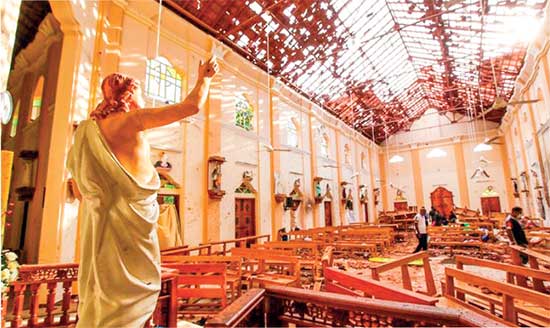
A statue of Jesus amidst debris at St Sebastian’s Church, Katuwapitiya, Negombo following the Easter Sunday bombing
By Shamindra Ferdinando
Brigadier Chula Kodituwakku, on April 26, 2019, attributed the Easter Sunday carnage to four specific reasons, namely (1) battlefield setbacks suffered by ISIS (2) ISIS directing Zahran Hashim’s outfit to carry out the high profile attacks (3) massacre of Muslim worshippers in New Zealand, in 2019, and (4) domestic reasons.
Kodituwakku, in his capacity as the Director of Directorate of Military Intelligence (DMI), addressed editors of national newspapers, and journalists, as well as representatives of television stations, on the invitation of the then Army Commander Lt. Gen. Mahesh Senanayake.
Seated at the head table, were the then President Maithripala Sirisena, flanked by Lt. Gen. Senanayake, and the then Northern Province Governor Dr. Suren Raghavan, and the venue, the Janadhipathy Mandiraya. (Senanayake retired in the third week of Aug 2019.
The retired Army Chief exploited the crisis caused by the Easter carnage to launch a short-lived political career. His effort ended disastrously. Having failed to obtain at least 50,000 votes at Nov 16, 2019 presidential election, Senanayake left the country, subsequently, for employment overseas. Dr. Raghavan secured a slot on the SLPP National List.
Neither Brig. Koditiwakku, nor any other person, at the head table, responded, though the media sought a clarification as regards what these domestic reasons were. The writer was among those present at the meeting summoned by President Sirisena, his (President) first encounter with the media, following the Easter Sunday attacks. Much to the surprise of those who had been there President Sirisena, who had been in Singapore at the time of the attack, claimed that he got to know about the incident, through social media. Reference was made to a friend who showed the relevant post to him (Politicos’ links to terrorist grouping: Prez promises no holds barred probe with strapline ‘Terror mastermind influenced by India-based ISIS’ April 27, 2019 The Island) (Close on the heels of Shavendra Silva being appointed the Commander of the Army, Kodituwakku was replaced.)
But when Sirisena recently appeared before the Presidential Commission of Inquiry (P CoI), in his capacity as the former President and Commander-in-Chief of the armed forces, he claimed, on the day of the Easter attacks, he was hospitalized and, therefore, didn’t have access even to his Chief Security Officer. Obviously, P CoI hadn’t sought an explanation from the former President as regards the contradictory answers as it was probably not aware of the President’s initial claim of a friend alerting him. Let us also hope that he won’t be given kid-glove treatment, like the way then PM Ranil Wickremesinghe was treated when being questioned before the Treasury Bond Commission, despite him having been in the thick of it.
In addition to the on-going P CoI, there were two other investigations, (1) a three-member committee, headed by Supreme Court Judge, Vijith Kumara Malalagoda, and (2) eight-member Parliamentary Select Committee (PSC), led by the then Deputy Speaker, Ananda Kumarasiri. In addition to them, PSC member, Field Marshal Sarath Fonseka, submitted a report, of his own, on the Easter attacks. However, concluded inquiries, as well as the ongoing PCoI and CID investigations, hadn’t really probed domestic reasons that may have contributed to the Easter attacks. Although Brig. Kodiruwakku included domestic reasons among four specific causes; there hadn’t been any genuine discussion/attempt to examine what these could be.
‘Deep State’ faulted
Dr. Rajan Hoole’s thought provoking ‘Sri Lanka’s Easter Tragedy: When the Deep State gets out of its Depth,’ discussed the circumstances leading to the Easter carnage – the worst single terror attack carried out, in Sri Lanka, against undefended targets. The author is the more even-handed brother of Prof. Ratnajeevan Hoole, member of the Election Commission who caused quite a number of controversies, in the run up to the Presidential election. Ratnajeevan Hoole had always responded swiftly to whatever issues raised by the media, regardless of the accusation made and the origins of it.
The writer recently had an opportunity to peruse the Sinhala translation of Dr. Rajan Hoole’s ‘Sri Lanka’s Easter Tragedy: When the Deep State gets out of its Depth,’ launched several weeks before the last presidential election, in Nov 2019. Translated by Mahinda Hatthaka (Movement for Defense of Democratic Rights), the Sinhala translation is an immensely readable tome that the writer believes shed light on the complex web of secrets/situations/relationships that led to the Easter carnage. Dr. Hoole, who authored ‘The Arrogance of Power: Myths, decadence and murder,’ in January 2001, quite clearly blamed the State elements for the attack. A founder member of the daring and pioneering University Teachers for Human Rights (UTHR) Jaffna, that stood up to the once mighty LTTE, albeit clandestinely, Dr. Hoole is explicit in his accusation that those who backed SLPP candidate Gotabaya Rajapaksa created an environment to deprive the Muslims of an opportunity to vote at the Nov 2019 presidential election. The author asserted that attempt failed while making reference to the plantation Tamils being disenfranchised in 1949, consequent to the 1948 Citizenship Act.
Interestingly, the author conveniently desisted from recalling how the LTTE-TNA combine denied the Northern community the opportunity to vote at the Nov 2005 presidential election. The calculated move definitely cost UNP candidate Ranil Wickremesinghe the election. Wickremesinghe lost by 186,000 votes.
Kumaran Pathmanathan, aka ‘KP,’ in an exclusive interview with the writer, in August 2010, asserted that the LTTE felt comfortable in having Mahinda Rajapaksa as the President as he could be dealt with much more easily than Wickremesinghe. The Rajapaksas proved Velupillai Prabhakaran wrong, four years after that decisive election. At the time of the interview, ‘KP’ was in the custody of the DMI.
Let me get back to Dr. Hoole’s work. In Chapter 4, the academic briefly discussed the possibility of the failure on the part of the now proscribed National Thowheed Jamaat (NTJ) to secure representation in parliament at the August 2015 general election. Had the NTJ succeeded in securing a foothold in parliament, the Easter Sunday carnage might not have happened, Dr. Hoole speculated, asserting that the NTJ adopted an aggressive strategy, in the wake of the electoral failure. Dr. Hoole based his quite controversial assessment on an electoral agreement, involving the NTJ, M.L.A.M. Hizbullah of the UPFA (United People’s Freedom Alliance) and Abdul Rahuman and Shibly Farook (both members of SLMC-Sri Lanka Muslim Congress, a constituent of the UNP-led coalition).
On similar lines, many have earlier pointed out that if not for old JRJ’s greed and incessant political intrigue to retain absolute power, whether it be through a by-election, or even in the highly rigged referendum to postpone the general election, in the early 80s, and had the UNP instead allowed room for greater pluralism, in parliament, by allowing the likes of the JVP to enter the August assembly, in a more level playing field, there wouldn’t have been a second southern blood bath, in the late 80s.
Dr. Hoole, without hesitation, whatsoever, likened the attempt made by Kattankudy-born Zahran Hashim to have some of his nominees, in parliament, to that of Prabhakaran’s successful arrangement with R. Sampanthan of the TNA. In terms of the agreement, the TNA acknowledged the LTTE as the sole representative of the Tamils, two years after the high-profile assassination of TULF lawmaker, Neelan Thiruchelvam, in 1999.
The UNP secured 106 seats, whereas the UPFA managed 95, at the August 2015 general election. A section of the SLFP-led UPFA backed the UNP to form the government in terms of the 19th Amendment to the Constitution that facilitated the despicable political project.
President Sirisena, who is also the leader of the SLFP, had no qualms in accommodating defeated M.L.A.M. Hizbullah on the UPFA National List. Hizbullah was among over half a dozen defeated UPFA candidates, accommodated on the National List. National List MP Hizbullah functioned as the Batticaloa political lord until he resigned in January 2019 to pave the way for President Sirisena loyalist, Shantha Bandara, to enter parliament. Hizbullah was rewarded with the appointment as the Eastern Province Governor. At the time of the Easter attacks, Hizbullah served as the Eastern Province Governor and Chairman of the Batticaloa Campus (Pvt) Limited. In a report presented to the Parliament Sectoral Sub-Committee on Higher Education and Human Resources, the scandalous politician identified himself as Dr. M.L.A.M. Hizbullah. In spite of failing to get elected, did Hizbullah serve the interests of Zahran Hashim?
Nexus between political parties
and terrorists
Dr. Hoole dealt with complexities experienced by both Tamil and Muslim political parties represented in parliament, due to them having to deal with the LTTE and the NTJ, respectively. The author, in no uncertain terms, censured TNA leader R. Sampanthan for shielding the LTTE, accused of killing civilians trying to flee the area dominated by the group. The author, while acknowledging the inexcusable use of civilians as human shields, lambasted Sampanthan for misleading the media.
The particular media briefing, attended by journalists representing international media organizations, where Sampanthan alleged the government lied regarding the LTTE killing those trying to seek refuge in the government-held area, according to the author, took place on Feb 17, 2009. The military brought the war to a successful conclusion on the morning of May 19, 2009.
Dr. Hoole also referred to an alleged SLFP attempt to exploit the JVP, in the run-up to the Dec 19, 1988 presidential election and the Feb 15, 1989 general election. One cannot dispute Dr. Hoole’s contention that the SLFP remained silent on the JVP killings, while condemning extrajudicial operations carried out by security forces to justify claim the SLFP sought political power with the help of the JVP.
The author examined the gradual rise of the LTTE and the registration of the NTJ, in 2015, as well as basic differences between Tamil terrorism and the operation undertaken by Zahran Hashim, meant to be the Supreme Leader of the Sri Lankan Muslim community. How he expected to achieve such a feat by leading nearly simultaneous coordinated suicide attacks is still a mystery. Perhaps that mystery can be solved if Pulasthini Rajendran, alias Sarah, the wife of Achchi Mohammdu Mohammadu Hasthun, the suicide bomber who blew himself up at St. Sebastian’s Church, at Katuwapitiya, close to Negombo town, could be found. She most likely fled to India, by sea, in September 2019. In spite of claims Sarah is alive, the government is yet to establish the truth. The claim by some that she was the RAW mole in the Zahran’s terror camp might be the reason why she found ready refuge in India after being part of such a vicious carnage here.
Dr. Hoole ascertained that unlike Zahran Hashim, Prabhakaran’s violent career hadn’t been so meticulously planned, but the latter’s project lasted for more than three decades. However, the main thrust of ‘Sri Lanka’s Easter Tragedy: When the Deep State gets out of its Depth’ is to blame the heinous crime on what the author described as ‘Deep State’ comprising influential sections of political parties, civil administration and the military. The readiness of ‘Deep State’ to undertake operations at the expense of the rules of the land, regardless of political consequences, is certainly a frightening prospect. Perhaps, the P CoI should request Dr. Rajan Hoole to help in the examination of the Easter Sunday attacks.
Although, there hadn’t been a single NTJ-linked incident, following the Easter attacks, it would be of pivotal importance to verify Dr. Rajan Hoole’s assertions. Did Zahran Hashim decide to mark NTJ’s emergence with a suicide bombing campaign, in the wake of his abortive bid to get three parliamentary seats? Perhaps, Dr. Rajan Hoole is wrong. But, can P CoI disregard an opportunity to establish the truth.
There was reference to Pol Pot’s Cambodia in relation to the weakening of the judiciary, communal violence and annihilation of JVP-inspired insurgencies et al.
Did JRJ plan riots before Thinnaveli killings?
Dr. Rajan Hoole, in his latest work, repeated accusation levelled in ‘The Arrogance of Power: Myths, decadence and murder,’ that the July 1983 violence had been pre-planned and was unleashed immediately after the LTTE attack on an army patrol at Thinnaveli, Jaffna, on July 23, 1983. The first executive President had been accused of directing the power of the State and the UNP trade union setup (Jathika Sevaka Sangamaya) against the Tamil community. Reference was made to JRJ seeking US and Israeli assistance to establish a security apparatus.
Amusingly, Dr. Hoole asserted that Indian intervention took place in the wake of JRJ inviting/seeking US and Israeli security cooperation following the anti-Tamil riots, where the President deceitfully blamed the JVP.
Nothing can be further from the truth than the assertion that the Indian intervention took place in 1987. India forced President JRJ to accept deployment of the Indian Army, in the Northern and Eastern Provinces, in July 1987, several years after New Delhi created an environment conducive for military occupation in the guise of restoring peace. In fact, the Thinnaveli ambush couldn’t have taken place, if not for India or some other party providing the expertise and the technology to half a dozen terrorist groups, including the LTTE, over a period of time.
Indian strategists obviously triggered violence by providing the LTTE the required expertise to take it to the next level. The LTTE proved its capacity and capability to exploit Indian training when Prabhakaran took on the Indian Army, in Oct 1987. By the time New Delhi was forced to call off its Sri Lanka mission, at the behest of Premadasa, 1,300 Indian officers, and men, were killed, and over 2,500 wounded. Indian trainers can be really happy about their success in training foreign terrorists. Perhaps, the Indian misadventure can be blamed on ‘Deep State’ in India.
Sri Lanka should be grateful to the late one-time India’s High Commissioner in Colombo, J.N. Dixit, for setting the record straight in his memoirs, ‘Makers of India’s Foreign Policy’, published in 2004.
Dixit asserted that the decision to give active support to Sri Lankan Tamil militants could be considered one of the two major foreign policy blunders made by the then Indian Prime Minister Indira Gandhi. But he strongly defended the Prime Minister’s action, while asserting Gandhi couldn’t have afforded the emergence of Tamil separatism, in India, by refusing to support the aspirations of Sri Lankan Tamils [Chapter 6:An Indocentric Practitioner of Realpolitik-Makers of India’s Foreign Policy].
However, Dixit failed to explain how the Prime Minister hoped to achieve her twin objectives by recruiting, training, arming and deploying thousands of Sri Lankan Tamil youth against an elected government. India cannot absolve itself of the responsibility for helping Sri Lankan terrorists establish contact with international terrorist groups. The Indian action caused irrevocable damage to Indo-Lanka relations. The Maldives, too, suffered due to Indian intervention in Sri Lanka. Dixit totally ignored the Maldivian factor, though India was responsible for the coup attempt in the Maldives by way of providing training to those who mounted a sea-borne raid, in early Nov 1988. The raiders belonged to Indian-trained PLOTE, now represented in parliament.
Three years later, a Sea borne LTTE team executed a top secret plan that led to the assassination of Rajiv Gandhi, who ordered the deployment of the Indian Army in Sri Lanka.
Muslim extremism-military links
Dr. Hoole’s allegations, pertaining to the role played by Muslim youth in Sri Lanka’s war against the LTTE, too, should be examined against the backdrop of allegations that renegade LTTE Commander, Karuna Amman, provided them weapons training. Can claims that Muslim youth, and those ex-LTTE cadres loyal to Karuna, fought in high-risk battles/took part in risky operations, during 2004-2007 period, be substantiated? No less a person than the wartime Army Commander, the then Lt. Gen. Sarath Fonseka, while acknowledging the support received from the breakaway LTTE faction, however, denied any high-profile role being played by them in crushing the LTTE militarily. In the absence of proper official account of the involvement of Tamil groups, as well as the LTTE breakaway faction, in ‘operations’ against the LTTE, the public can be easily deceived. Ex-members of Tamil groups ‘worked’ for the military in various capacities. That cannot be denied. There is no harm in acknowledging their contribution, though such open admission might not be acceptable to some.
The P CoI can inquire into Dr. Hoole’s findings as part of its overall efforts to unravel the mystery. Can there be any rational explanation for lawmaker M.A. Sumanthiran to publicly justifying the Easter Sunday massacre, in spite of at least 70 of those perished being totally innocent Tamils. So, any price is not too high for political expediency?
Dr. Hoole made no reference to Sumanthiran’s declaration though he commented on various developments and the situation. The author indicated that he didn’t desire to respond to The Island queries as regards Sumanthiran’s shocking statement at an event organized by the Sinhala weekly Annidda to celebrate its first anniversary at the BMICH. The President’s Counsel, and then TNA mouthpiece, alleged that the Easter Sunday carnage was a result of Sri Lanka’s failure to ensure certain basic values. The TNA heavyweight warned of dire consequences, unless Sri Lanka addressed the grievances of the minorities.
Sumanthiran said that no conversation took place today without reference to the Easter Sunday attacks. The lawmaker said that the public was asking what was going to happen because the country was stunned by what happened on that day. Sumanthiran said: All of us were so complacent we lived in a fool’s paradise imagining that the country was in peace in the absence of violence. As there had been no fighting for 10 years, people assumed the country had attained peace. “
Such an attack would have happened some day because the country had not laid the foundation for peaceful co-existence in this country, the TNA heavyweight said. “What we saw was a false edifice. And we were quite happy to carry on with that. Three decades of violent conflict that emanated from the North and East kept us on our toes and those days we actually saw the need to address those issues in a very deep and meaningful way”.
Sumanthiran alleged that once the war was brought to a conclusion, in May 2009, those responsible assumed there was no requirement to address those issues. They continued to pay lip service, the lawmaker alleged, adding: “Whenever issues were raised, they say they must resolve those issues. But deep down, they didn’t feel those issues had to be addressed.”
Referring to the Easter Sunday carnage, Sumanthiran said it was most unfortunate that something like that had to happen for the country to reflect and realize that it necessarily had to go back to certain basic values by which all could live together as a country. Sumanthiran warned: “Unless we agree on those basic values we are doomed.”
Declaring that there wouldn’t be any future for the country unless consensus could be reached on what those basic values were, Sumanthiran called equality a key value.
The Easter Sunday carnage remains a mystery, though pathetic failure on the part of law enforcement and military, as well as the political leadership, to thwart the NTJ operation, has been established beyond doubt.
Midweek Review
Batalanda and complexities of paramilitary operations
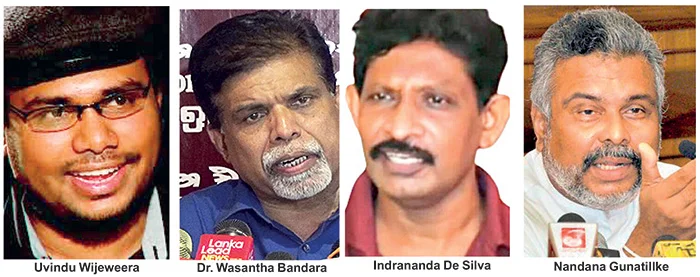
Former President Ranil Wickremesinghe’s recent combative ‘Head-to-Head’ interview with British-American Mehdi Hasan on Al Jazeera has opened a can of worms. As to why Hasan raised the Batalanda Presidential Commission report, during a 49-minute interview conducted at the London’s Conway Hall, with a clearly pro LTTE audience, remains a mystery. This must be yet another notorious way to show how even-handed they are as in the case of its coverage of Russia, China, Palestine or Ukraine for their gullible viewers.
Recorded in February and aired in March 2025, the interview is definitely the most controversial the UNP leader, who is also an Attorney-at-Law, ever faced during his political career; always used to getting kid glove treatment, especially after taking over the party in 1994.
The continuing public discourse on Batalanda should provoke a wider discussion on Sri Lanka’s response to separatist Tamil terrorism, since the cold blooded murder of Jaffna SLFP Mayor Alfred Duriappah, which signalled the beginning of the LTTE terror campaign that ended in May 2009 with the crushing military defeat of the Tigers on the banks of the Nathikadal lagoon, as well as two southern insurgencies in 1971 and 1987-1990.
As Nandana Gunatilleke (one time JVP General Secretary and ex-MP), Dr. Wasantha Bandara (ex-JVPer and close associate of the slain JVP leader Rohana Wijeweera), Indrananda de Silva (ex-JVPer, incumbent Central Committee member of Frontline Socialist Party [FSP] and ex-military photographer) and Uvindu Wijeweera (Rohana Wijeweera’s son and leader of Dewana Parapura) agreed during the recent Hiru ‘Balaya’ discussion, conducted by Madushan de Silva, the Batalanda operation was in line with the overall counter-terrorist/insurgency strategy of the then government.
The issues at hand cannot be discussed at all without taking into consideration the JVP terrorism that, at one-time, almost overwhelmed the UNP’s unbroken rule, since 1977, carried out while openly brushing aside most of the universally accepted genuine parliamentary norms. The country’s second Republican constitution, promulgated by the UNP regime with a 5/6 majority in Parliament, in 1978, had been amended no less than 13 times by the time they were finally ousted in 1995. This was mainly to facilitate their continuous rule. Unfortunately, all stakeholders have sought to take advantage of Batalanda, thereby preventing a proper dialogue. Quite surprisingly, none of the guests, nor the interviewer, bothered, at least, to make a reference to the JVP bid on President J.R. Jayewardene’s life in Parliament on the morning of July 18, 1987. At the time, JVPer Ajith Kumara, working in the House as a minor employee, hurled two hand grenades towards JRJ, with the then Prime Minister Ranasinghe Premadasa seated next to JRJ. While one government MP lost his life, several others suffered injuries, including then National Security Minister Lalith Athulathmudali, whose spleen had to be removed.
At one point, Gunatilleke declared that they assassinated UNP MP for Tangalle Jinadasa Weerasinghe on July 3, 1987, in response to the government killing well over 100 people, in Colombo, protesting against the signing of the Indo-Lanka accord on July 29, 1987. The parliamentarian was killed near the Barawakumbuka-Welangahawela bridge on the Colombo-Rathnapura-Embilipitiya Road. The UNPer was killed on his way home after having declined Premier Premadasa’s offer to make an SLAF chopper available for him to reach home safely.
Against the backdrop of MP Weerasinghe’s assassination and the grenade attack on the UNP parliamentary group that claimed the life of Keethi Abeywickrema (MP for Deniyaya), the government had no option but to respond likewise. The operation, established at the Batalanda Housing scheme of the State Fertiliser Corporation, constituted part of the counter-insurgency strategy pursued by the UNP.
Those who called Batalanda complex Batalanda torture camp/ wadakagaraya conveniently forgot during the second JVP inspired insurgency, the military had to utilize many public buildings, including schools, as makeshift accommodation for troops. Of course the UNP established Batalanda under different circumstances with the then Industries Minister Ranil Wickremesinghe providing political authority. Batalanda had been an exclusive police operation though the Army had access to it whenever a requirement arose.
Those who had been suddenly withdrawn from the Northern and Eastern Provinces, to meet the rapidly evolving security threat in the South, required accommodation. FSP CC member Indrananada de Silva had received unhindered access to Batalanda in his capacity as a military photographer and the rest is history.
As to why Indrananda de Silva switched his allegiance to the FSP should be examined, taking into consideration his previous role as a trusted military photographer, formerly a Lance Corporal of the Military Police. An influential section of the JVP, led by Kumar Gunaratnam, formed the FSP in April 2012 though it didn’t receive the much anticipated public support. Both Indrananda de Silva and Nandana Gunatilleke, who aligned himself with the UNP, found fault with the JVP-led National People’s Power (NPP) over its handling of the Batalanada issue.
Paramilitary operations
Paramilitary operations had been an integral part of the overall counter-insurgency campaign, directed at the JVP responsible for approximately 6,600 killings. Among those death squads were PRRA primarily drawn from the SLMP (Sri Lanka Mahajana Party) and SRRA (the socialist Revolutionary Red Army). PRRA had close links with the Independent Student Union (ISU) whose leader Daya Pathirana was slain by the JVP. The vast majority of people do not remember that Daya Pathirana, who led the ISU during the turbulent 1985-1986 period, was killed mid-Dec. 1989. The second insurgency hadn’t started at that time though the JVP propagated the lie that they took up arms against the UNP government following the signing of the Indo-Lanka peace accord on July 29, 1987.
In addition to PRRA and SRRA, the government made use of paramilitary groups, namely Kalu balallu, Ukkusso, Rajaliyo, Kaha balallu, Kola koti, Rathu Makaru, Mapila, Gonussa, Nee, Keshara Sinhayo, Le-mappillu and Kalu koti.
The UNP also involved some elements of Indian trained Tamil groups (not of the LTTE) in paramilitary operations. Such operations, that had been backed by respective Cabinet Ministers, were supervised by local law enforcement authorities. Paramilitary operations had been in line with psychological warfare that was meant to cause fear among the JVP, as well as the general population. Military operations that had been combined with paramilitary actions received the blessings of the political leadership at the highest level. In the case of Batalanda (1988-1990) President J.R. Jayewardene and Ranasinghe Premadasa knew of its existence.
Even after the eradication of the top JVP leadership, by Nov. 1989, police, military and paramilitary operations continued unabated. Former JVPers appearing on ‘Balaya’ agreed that counter-insurgency operations were actually brought to an end only after D.B. Wijetunga succeeded President Ranasinghe Premadasa after the latter’s assassination on May Day 1993.
After the LTTE resumed war in June 1990, just a couple of months after the withdrawal of the Indian Army (July 1987-March1990), the UNP authorized paramilitary operations in the northern and eastern areas. Members of TELO, PLOTE, EPRLF as well as EPDP were made part of the overall government security strategy. They operated in large groups. Some paramilitary units were deployed in the Jaffna islands as well. And these groups were represented in Parliament. They enjoyed privileged status not only in the northern and eastern regions but Colombo as well. The government allowed them to carry weapons in the city and its suburbs.
These groups operated armed units in Colombo. The writer had the opportunity to visit EPDP and PLOTE safe houses in Colombo and its suburbs soon after they reached an understanding with President Ranasinghe Premadasa. Overnight at the behest of President Premadasa, the Election Department granted these Tamil groups political recognition. In other words, armed groups were made political parties. The Premadasa government accepted their right to carry weapons while being represented in Parliament.
It would be pertinent to mention that thousands of Tamil paramilitary personnel served the government during that period. There had been many confrontations between them and the LTTE over the years and the latter sought to eliminate key paramilitary personnel. Let me remind you of the circumstances, the EPRLF’s number 02 Thambirajah Subathiran alias Robert was sniped to death in June 2003. Robert was engaged in routine morning exercises on the top floor of the two-storeyed EPRLF office, on the hospital road, Jaffna, when an LTTE sniper took him out from the nearby Vembadi Girls’ high school. The operation of the Norway managed Ceasefire Agreement (CFA) made no difference as the LTTE removed Robert who led the party here in the absence of leader Varatharaja Perumal, the first and the only Chief Minister of the North-Eastern Province.
In terms of the CFA that had been signed by Premier Ranil Wickremesinghe and LTTE leader Velupillai Prabhakaran, in Feb. 2002, the government agreed to disarm all paramilitary personnel. Many wouldn’t remember now that during Premadasa’s honeymoon with the LTTE, the Army facilitated the LTTE onslaught on paramilitary groups in selected areas.
Muthaliff’s role
During the ‘Balaya’ discussion, the contentious issue of who shot JVP leader Rohana Wijeweera came up. Nandana Gunatilleke, who contested the 1999 Dec. presidential election. as the JVP candidate, pointing to an article carried in the party organ that dealt with Wijeweera’s assassination said that he wrongly named Gaffoor as one of the persons who shot their leader whereas the actual shooter was Muthaliff. The headline named Thoradeniya and Gaffoor as the perpetrators.
Declaring that he personally wrote that article on the basis of information provided by Indrananda de Silva, Gunatilleke named Asoka Thoradeniya and Tuan Nizam Muthaliff of the Army as the perpetrators of the crime. Thoradeniya served as Sri Lanka’s High Commissioner in the Maldives during the Yahapalana administration, while Muthaliff was killed by the LTTE in Colombo in late May 2005. The shooting took place at Polhengoda junction, Narahenpita. Muthaliff was on his way from Manning town, Narahenpita, to the Kotelawala Defence University.
The programme was told that the JVP had over the years developed close relationship with Thoradeniya while Indrananda de Silva accused Dr. Wasantha Bandara of duplicity regarding Muthaliff. How could you recognize Muthaliff, slain by the LTTE, as a war hero as he was actually one of the persons who shot Rohana Wijeweera, the latter asked.
At the time of his assassination, Muthaliff served as the Commanding Officer, 1 st Regiment Sri Lanka Military Intelligence Corps. The then parliamentarian Wimal Weerawansa was among those who paid last respects to Maj. Muthaliff.
At the time of Rohana Wijeweera’s arrest, Muthaliff served as Lieutenant while Thoradeniya was a Major. Indrananda de Silva strongly stressed that atrocities perpetrated by the police and military in the South or in the northern and eastern regions must be dealt with regardless of whom they were conducting operations against. The former JVPer recalled the Army massacre in the east in retaliation for the landmine blast that claimed the lives of Northern Commander Maj. Gen. Denzil Kobbekaduwa and a group of senior officers, including Brigadier Wijaya Wimalaratne, in early Aug. 1990 in Kayts.
Dr. Wasantha Bandara warned of the Western powers taking advantage of what he called false narrative to push for a Truth and Reconciliation Commission.
It would be pertinent to mention that the LTTE also used the underworld as well as some corrupt Army personnel in planning high profile assassinations. Investigations into the assassination of Muthaliff, as well as Maj. Gen. Parami Kulatunga, killed in a suicide attack at Pannipitiya, in June 2006, revealed the direct involvement of military personnel with the LTTE.
Indrananda de Silva disclosed that soon after Anura Kumara Dissanayake won the presidential election last September, the FSP, in writing, requested the JVP leader to inquire into killings during that period, including that of Rohana Wijeweera. The FSPer alleged that President Dissanayake refrained from even acknowledging their letter. Indrananda de Silva emphasized that Al Jazeera never disclosed anything new as regards Batalanda as he exposed the truth years ago. The former JVPer ridiculed the ruling party tabling the Batalanda Commission report in the wake of Wickremesinghe’s Al Jazeera interview whereas the matter was in the public domain for quite some time.
Indrananda de Silva and Nandana Gunatilleke exchanged words over the latter’s declaration that the JVP, too, was subjected to investigation for violence unleashed during the 1987-1990 period. While the FSPer repeatedly declared that those who carried out directives issued by the party were arrested and in some cases killed, Nandana Gunatilleke took up the position that the party should be held accountable for crimes perpetrated during that period.
The interviewer posed Nandana Gunatilleke the question whether he was betraying his former comrades after joining the UNP. Nandana Gunatilleke shot back that he joined the UNP in 2015 whereas the JVP joined UNP as far back as 2009 to promote retired Army Chef Sarath Fonseka’s presidential ambition even though he wiped out the JVP presence in Trincomalee region during the second insurgency.
JVP’s accountability
Nandana Gunatilleke is adamant that the party should accept responsibility for the killings carried out at that time. The former JVPer declared that Vijaya Kumaratunga (Feb. 16, 1988), first Vice Chancellor of the Colombo University (March 08, 1989) Dr. Stanley Wijesundera, Ven. Kotikawatte Saddhatissa thera (Aug. 03, 1988) and Chairperson of the State Pharmaceutical Corporation Gladys Jayewardene (Sept. 12, 1989) were among those assassinated by the JVP. SPC Chairperson was killed for importing medicine from India, the former Marxist aligned with the UNP said, while actor-turned-politician Kumaratunga’s assassination was attributed to his dealings with President J.R. Jayewardene.
According to Nandana Gunatilleke, except for a few killings such as General Secretaries of the UNP Harsha Abeywickrema (Dec 23, 1987) and Nandalal Fernando (May 20, 1988), the vast majority of others were ordinary people like grama sevakas killed on mere accusation of being informants. The deaths were ordered on the basis of hearsay, Nandana Gunatilleke said, much to the embarrassment of others who represented the interest of the JVP at that time.
One quite extraordinary moment during the ‘Balaya’ programme was when Nandana Gunatilleke revealed their (JVP’s) direct contact with the Indian High Commission at a time the JVP publicly took an extremely anti-Indian stance. In fact, the JVP propagated a strong anti-Indian line during the insurgency. Turning towards Dr. Wasantha Bandara, Gunatilleke disclosed that both of them had been part of the dialogue with the Indian High Commission.
It reminds me of the late Somawansa Amarasinghe’s first public address delivered at a JVP rally in late Nov. 2001 after returning home from 12 years of self-imposed exile. Of the top JVP leadership, Somawansa Amarasinghe, who had been married to a close relative of powerful UNP Minister Sirisena Cooray, was the only one to survive combined police/military/paramilitary operations.
Amarasinghe didn’t mince his words when he declared at a Kalutara rally that his life was saved by Indian Premier V.P. Singh. Soft spoken Amarasinghe profusely thanked India for saving his life. Unfortunately, those who discuss issues at hand conveniently forget crucial information in the public domain. Such lapses can be both deliberate and due to negligence.
By Shamindra Ferdinando
Midweek Review
Independent Monitor
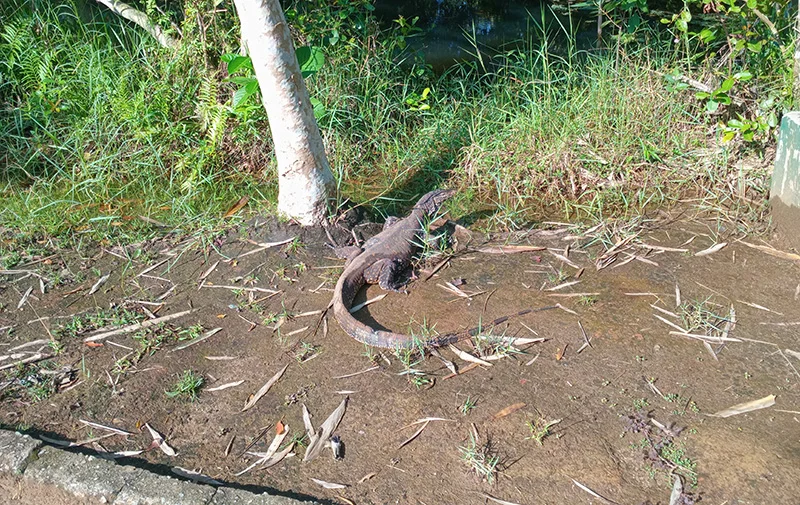
You may think sloth comes very easy,
To your kingly monitor of the shrinking marsh,
As he lies basking smugly in the morn sun,
But he is organized and alert all the while,
As he awaits his prey with patience infinite,
Free of malice, a professional of a kind,
His cumbrous body not slowing his sprite….
But note, he’s no conspirator spitting guile,
And doesn’t turn nasty unless crossed,
Nor by vengeful plans is he constantly dogged,
Unlike those animals of a more rational kind,
Whose ways have left behind a state so sorry.
By Lynn Ockersz
Midweek Review
Rajiva on Batalanda controversy, govt.’s failure in Geneva and other matters

Former President Ranil Wickremesinghe’s recent interview with Mehdi Hasan on Al Jazeera’s ‘Head-to-Head’ series has caused controversy, both in and outside Parliament, over the role played by Wickremesinghe in the counter-insurgency campaign in the late’80s.
The National People’s Power (NPP) seeking to exploit the developing story to its advantage has ended up with egg on its face as the ruling party couldn’t disassociate from the violent past of the JVP. The debate on the damning Presidential Commission report on Batalanda, on April 10, will remind the country of the atrocities perpetrated not only by the UNP, but as well as by the JVP.
The Island sought the views of former outspoken parliamentarian and one-time head of the Government Secretariat for Coordinating the Peace Process (SCOPP) Prof. Rajiva Wijesinha on a range of issues, with the focus on Batalanda and the failure on the part of the war-winning country to counter unsubstantiated war crimes accusations.
Q:
The former President and UNP leader Ranil Wickremesinghe’s interview with Al Jazeera exposed the pathetic failure on the part of Sri Lanka to address war crimes accusations and accountability issues. In the face of aggressive interviewer Mehdi Hasan on ‘Head-to-Head,’ Wickremesinghe struggled pathetically to counter unsubstantiated accusations. Six-time Premier Wickremesinghe who also served as President (July 2022-Sept. 2024) seemed incapable of defending the war-winning armed forces. However, the situation wouldn’t have deteriorated to such an extent if President Mahinda Rajapaksa, who gave resolute political leadership during that war, ensured a proper defence of our armed forces in its aftermath as well-choreographed LTTE supporters were well in place, with Western backing, to distort and tarnish that victory completely. As wartime Secretary General of the Government’s Secretariat for Coordinating the Peace Process (since June 2007 till the successful conclusion of the war) and Secretary to the Ministry of Disaster Management and Human Rights (since Jun 2008) what do you think of Wickremesinghe’s performance?
A:
It made him look very foolish, but this is not surprising since he has no proper answers for most of the questions put to him. Least surprising was his performance with regard to the forces, since for years he was part of the assault forces on the successful Army, and expecting him to defend them is like asking a fox to stand guard on chickens.
Q:
In spite of trying to overwhelm Wickremesinghe before a definitely pro-LTTE audience at London’s Conway Hall, Hasan further exposed the hatchet job he was doing by never referring to the fact that the UNP leader, in his capacity as the Yahapalana Premier, co-sponsored the treacherous Geneva Resolution in Oc., 2015, against one’s own victorious armed forces. Hasan, Wickremesinghe and three panelists, namely Frances Harrison, former BBC-Sri Lanka correspondent, Director of International Truth and Justice Project and author of ‘Still Counting the Dead: Survivors of Sri Lanka’s Hidden War,’ Dr. Madura Rasaratnam, Executive Director of PEARL (People for Equality and Relief in Lanka) and former UK and EU MP and Wickremesinghe’s presidential envoy, Niranjan Joseph de Silva Deva Aditya, never even once referred to India’s accountability during the programme recorded in late February but released in March. As a UPFA MP (2010-2015) in addition to have served as Peace Secretariat Chief and Secretary to the Disaster Management and Human Rights Ministry, could we discuss the issues at hand leaving India out?
A:
I would not call the interview a hatchet job since Hasan was basically concerned about Wickremesinghe’s woeful record with regard to human rights. In raising his despicable conduct under Jayewardene, Hasan clearly saw continuity, and Wickremesinghe laid himself open to this in that he nailed his colours to the Rajapaksa mast in order to become President, thus making it impossible for him to revert to his previous stance. Sadly, given how incompetent both Wickremesinghe and Rajapaksa were about defending the forces, one cannot expect foreigners to distinguish between them.
Q:
You are one of the many UPFA MPs who backed Maithripala Sirisena’s candidature at the 2015 presidential election. The Sirisena-Wickremesinghe duo perpetrated the despicable act of backing the Geneva Resolution against our armed forces and they should be held responsible for that. Having thrown your weight behind the campaign to defeat Mahinda Rajapaksa’s bid to secure a third term, did you feel betrayed by the Geneva Resolution? And if so, what should have the Yahapalana administration done?
A:
By 2014, given the total failure of the Rajapaksas to deal firmly with critiques of our forces, resolutions against us had started and were getting stronger every year. Mahinda Rajapaksa laid us open by sacking Dayan Jayatilleke who had built up a large majority to support our victory against the Tigers, and appointed someone who intrigued with the Americans. He failed to fulfil his commitments with regard to reforms and reconciliation, and allowed for wholesale plundering, so that I have no regrets about working against him at the 2015 election. But I did not expect Wickremesinghe and his cohorts to plunder, too, and ignore the Sirisena manifesto, which is why I parted company with the Yahapalanaya administration, within a couple of months.
I had expected a Sirisena administration to pursue some of the policies associated with the SLFP, but he was a fool and his mentor Chandrika was concerned only with revenge on the Rajapaksas. You cannot talk about betrayal when there was no faith in the first place. But I also blame the Rajapaksas for messing up the August election by attacking Sirisena and driving him further into Ranil’s arms, so that he was a pawn in his hands.
Q:
Have you advised President Mahinda Rajapaksa’s government how to counter unsubstantiated war crimes allegations propagated by various interested parties, particularly the UN, on the basis of the Panel of Experts (PoE) report released in March 2011? Did the government accept your suggestions/recommendations?
A:
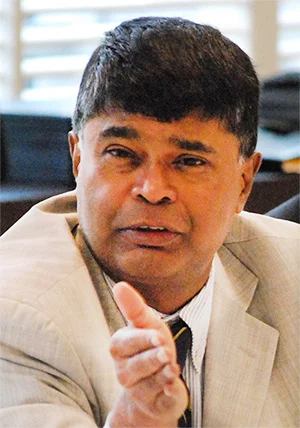
Prof. Rajiva Wijesinha
I kept trying, but Mahinda was not interested at all, and had no idea about how to conduct international relations. Sadly, his Foreign Minister was hanging around behind Namal, and proved incapable of independent thought, in his anxiety to gain further promotion. And given that I was about the only person the international community, that was not prejudiced, took seriously – I refer to the ICRC and the Japanese with whom I continued to work, and, indeed, the Americans, until the Ambassador was bullied by her doctrinaire political affairs officer into active undermining of the Rajapaksas – there was much jealousy, so I was shut out from any influence.
But even the admirable effort, headed by Godfrey Gunatilleke, was not properly used. Mahinda Rajapaksa seemed to me more concerned with providing joy rides for people rather than serious counter measures, and representation in Geneva turned into a joke, with him even undermining Tamara Kunanayagam, who, when he supported her, scored a significant victory against the Americans, in September 2011. The Ambassador, who had been intriguing with her predecessor, then told her they would get us in March, and with a little help from their friends here, they succeeded.
Q:
As the writer pointed out in his comment on Wickremesinghe’s controversial Al Jazeera interview, the former Commander-in-Chief failed to mention critically important matters that could have countered Hasan’ s line of questioning meant to humiliate Sri Lanka?
A:
How could you have expected that, since his primary concern has always been himself, not the country, let alone the armed forces?
Q:
Do you agree that Western powers and an influential section of the international media cannot stomach Sri Lanka’s triumph over separatist Tamil terrorism?
A:
There was opposition to our victory from the start, but this was strengthened by the failure to move on reconciliation, creating the impression that the victory against the Tigers was seen by the government as a victory against Tamils. The failure of the Foreign Ministry to work with journalists was lamentable, and the few exceptions – for instance the admirable Vadivel Krishnamoorthy in Chennai or Sashikala Premawardhane in Canberra – received no support at all from the Ministry establishment.
Q:
A couple of months after the 2019 presidential election, Gotabaya Rajapaksa declared his intention to withdraw from the Geneva process. On behalf of Sri Lanka that announcement was made in Geneva by the then Foreign Minister Dinesh Gunawardena, who became the Premier during Wickremesinghe’s tenure as the President. That declaration was meant to hoodwink the Sinhala community and didn’t alter the Geneva process and even today the project is continuing. As a person who had been closely involved in the overall government response to terrorism and related matters, how do you view the measures taken during Gotabaya Rajapaksa’s short presidency to counter Geneva?
A:
What measures? I am reminded of the idiocy of the responses to the Darusman report by Basil and Gotabaya Rajapaksa, who went on ego trips and produced unreadable volumes trying to get credit for themselves as to issues of little interest to the world. They were planned in response to Darusman, but when I told Gotabaya that his effort was just a narrative of action, he said that responding to Darusman was not his intention. When I said that was necessary, he told me he had asked Chief-of-Staff Roshan Goonetilleke to do that, but Roshan said he had not been asked and had not been given any resources.
My own two short booklets which took the Darusman allegations to pieces were completely ignored by the Foreign Ministry.
Q:
Against the backdrop of the Geneva betrayal in 2015 that involved the late Minister Mangala Samaraweera, how do you view President Wickremesinghe’s response to the Geneva threat?
A: Wickremesinghe did not see Geneva as a threat at all. Who exactly is to blame for the hardening of the resolution, after our Ambassador’s efforts to moderate it, will require a straightforward narrative from the Ambassador, Ravinatha Ariyasinha, who felt badly let down by his superiors. Geneva should not be seen as a threat, since as we have seen follow through is minimal, but we should rather see it as an opportunity to put our own house in order.
Q:
President Anura Kumara Dissanayake recently questioned both the loyalty and professionalism of our armed forces credited with defeating Northern and Southern terrorism. There hadn’t been a previous occasion, a President or a Premier, under any circumstances, questioned the armed forces’ loyalty or professionalism. We cannot also forget the fact that President Dissanayake is the leader of the once proscribed JVP responsible for death and destruction during 1971 and 1987-1990 terror campaigns. Let us know of your opinion on President Dissanayake’s contentious comments on the armed forces?
A: I do not see them as contentious, I think what is seen as generalizations was critiques of elements in the forces. There have been problems, as we saw from the very different approach of Sarath Fonseka and Daya Ratnayake, with regard to civilian casualties, the latter having planned a campaign in the East which led to hardly any civilian deaths. But having monitored every day, while I headed the Peace Secretariat, all allegations, and obtained explanations of what happened from the forces, I could have proved that they were more disciplined than other forces in similar circumstances.
The violence of the JVP and the LTTE and other such groups was met with violence, but the forces observed some rules which I believe the police, much more ruthlessly politicized by Jayewardene, failed to do. The difference in behaviour between the squads led for instance by Gamini Hettiarachchi and Ronnie Goonesinghe makes this clear.
Q:
Mehdi Hasan also strenuously questioned Wickremesinghe on his role in the UNP’s counter-terror campaign during the 1987-1990 period. The British-American journalists of Indian origins attacked Wickremesinghe over the Batalanda Commission report that had dealt with extra-judicial operations carried out by police, acting on the political leadership given by Wickremesinghe. What is your position?
A:
Wickremesinghe’s use of thugs’ right through his political career is well known. I still recall my disappointment, having thought better of him, when a senior member of the UNP, who disapproved thoroughly of what Jayewardene had done to his party, told me that Wickremesinghe was not honest because he used thugs. In ‘My Fair Lady,’ the heroine talks about someone to whom gin was mother’s milk, and for Wickremesinghe violence is mother’s milk, as can be seen by the horrors he associated with.
The latest revelations about Deshabandu Tennakoon, whom he appointed IGP despite his record, makes clear his approval for extra-judicial operations.
Q:
Finally, will you explain how to counter war crimes accusations as well as allegations with regard to the counter-terror campaign in the’80s?
A:
I do not think it is possible to counter allegations about the counter-terror campaign of the eighties, since many of those allegations, starting with the Welikada Prison massacre, which Wickremesinghe’s father admitted to me the government had engendered, are quite accurate. And I should stress that the worst excesses, such as the torture and murder of Wijeyedasa Liyanaarachchi, happened under Jayewardene, since there is a tendency amongst the elite to blame Premadasa. He, to give him his due, was genuine about a ceasefire, which the JVP ignored, foolishly in my view though they may have had doubts about Ranjan Wijeratne’s bona fides.
With regard to war crimes accusations, I have shown how, in my ‘Hard Talk’ interview, which you failed to mention in describing Wickeremesinghe’s failure to respond coherently to Hasan. The speeches Dayan Jayatilleke and I made in Geneva make clear what needed and still needs to be done, but clear sighted arguments based on a moral perspective that is more focused than the meanderings, and the frequent hypocrisy, of critics will not now be easy for the country to furnish.
By Shamindra Ferdinando
-
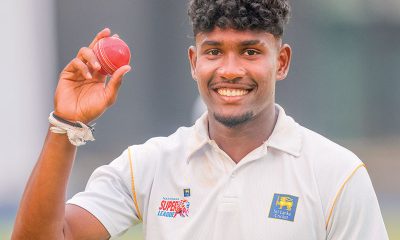
 Sports2 days ago
Sports2 days agoSri Lanka’s eternal search for the elusive all-rounder
-

 Features6 days ago
Features6 days agoCelebrating 25 Years of Excellence: The Silver Jubilee of SLIIT – PART I
-

 Business6 days ago
Business6 days agoCEB calls for proposals to develop two 50MW wind farm facilities in Mullikulam
-
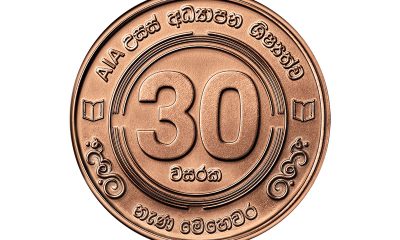
 Business4 days ago
Business4 days agoAIA Higher Education Scholarships Programme celebrating 30-year journey
-
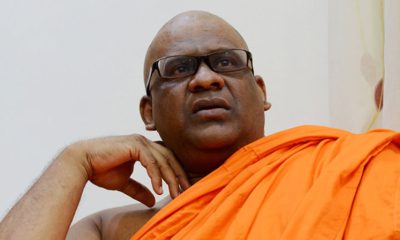
 News3 days ago
News3 days agoGnanasara Thera urged to reveal masterminds behind Easter Sunday terror attacks
-
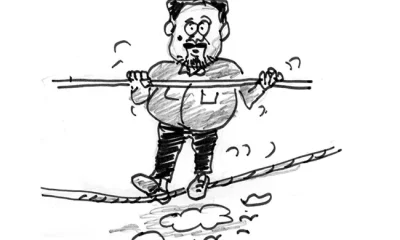
 Features6 days ago
Features6 days agoNotes from AKD’s Textbook
-

 News2 days ago
News2 days agoComBank crowned Global Finance Best SME Bank in Sri Lanka for 3rd successive year
-
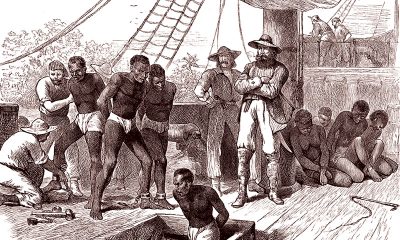
 Features2 days ago
Features2 days agoSanctions by The Unpunished











